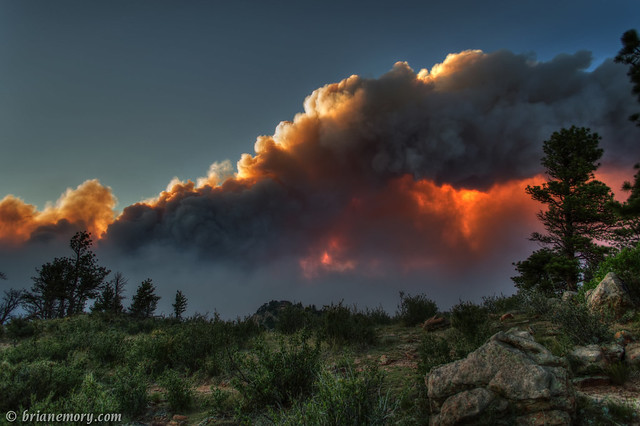Dr. Allen, who runs the Jemez Mountains Field Station at Bandelier National Monument, says those forests are burning into oblivion and grasslands and shrublands are taking their place. "Rising temperature is going to drive our forests off the mountains," he said.
During two presentations at environmental conferences in Aspen, over the weekend and on Monday morning, Dr. Allen sketched a bleak picture of how climate change is redrawing Southwestern landscapes.
Using data from tree ring studies, scientists have reconstructed a history of fires in the Southwest. The wildfires of the past were frequent and massive, but they stayed close to the ground and mainly helped prevent overcrowding. Take 1748. "Every mountain range we studied in the region was burning that year," Dr. Allen said. "But those were surface fires, not destroying the forest but just keeping an open setting." Cyclical wildfires were the norm.
But beginning in 1900, when railroads enabled the spread of livestock, cattle devoured the grassy surface fuels and the fire cycle stopped. A decade later, a national policy of forest fire suppression formalized this new normal. Over the next century, forest density went from 80 trees per acre to more than 1,000.
But beginning in 1900, when railroads enabled the spread of livestock, cattle devoured the grassy surface fuels and the fire cycle stopped. A decade later, a national policy of forest fire suppression formalized this new normal. Over the next century, forest density went from 80 trees per acre to more than 1,000.
Then in 1996, the climate emerged from a wet cycle into a dry one — part of a natural cycle for this region. Winters became drier. And "we immediately began seeing major fires," Dr. Allen said.
With so many trees crammed into the forest, fires climbed straight to the canopy instead of remaining on the ground.
"These forests did not evolve with this type of fire," said Dr. Allen. "Fire was a big deal in New Mexico, but it was a different kind of fire." The result, he said, is that the species that now live there — ponderosa pines, piñon, juniper — cannot regenerate, and new species are moving in to take their place.
"Ecosystems are already resetting themselves in ways big and small," Dr. Allen said. The challenge for managing these ecosystems, he said, is to try to help them adapt.
Seeking to preserve existing systems is futile, he said.

No comments:
Post a Comment